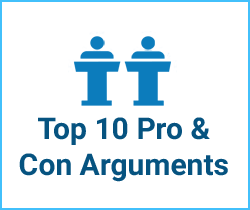How Does the Kinsey Scale Relate to Sexual Orientation?
General Reference (not clearly pro or con)
Denise Mann, freelance science writer, in a Nov. 11, 2004 article titled “’50s Sexuality Research Still Causing a Stir” on the website WebMD, stated:
“Zoologist-turned-sexpert Kinsey published two major studies — ‘Sexual Behavior in the Human Male’ in 1948 and ‘Sexual Behavior in the Human Female’ in 1953 — that are still considered, by some, to be the foundation of human sexuality research.
Kinsey based his work on interviews with 5,300 white men and 5,940 white women. These interviews serve as the foundation for his published works. Each interview comprised up to 521 questions that touched on anything and everything sexual including bestiality, pedophilia, extramarital sexuality, homosexual tendencies, masturbation, and penis size… As a result of these interviews, Kinsey promoted a seven-point scale of normal human sexuality, with bisexuality the most ‘balanced’ state.”
Nov. 11, 2004
Alfred Kinsey, PhD, et al., stated in their 1948 publication Sexual Behavior in the Human Male:
“Males do not represent two discrete populations, heterosexual and homosexual. The world is not to be divided into sheep and goats. It is a fundamental of taxonomy that nature rarely deals with discrete categories… The living world is a continuum in each and every one of its aspects…
While emphasizing the continuity of the gradations between exclusively heterosexual and exclusively homosexual histories, it has seemed desirable to develop some sort of classification which could be based on the relative amounts of heterosexual and homosexual experience or response in each history…
A seven-point scale comes nearer to showing the many gradations that actually exist…An individual may be assigned a position on this scale, for each period in his life.
Kinsey Scale:
0. Exclusively heterosexual with no homosexual 1. Predominantly heterosexual, only incidentally homosexual 2. Predominantly heterosexual, but more than incidentally homosexual 3. Equally heterosexual and homosexual 4. Predominantly homosexual, but more than incidentally heterosexual 5. Predominantly homosexual, only incidentally heterosexual 6. Exclusively homosexual” 1948
Erwin Haeberle, DPhil, EdD, Founder and Director of the Archive for Sexology in Berlin (formerly known as the Magnus Hirschfeld Archive for Sexology), in his 1983 book The Sex Atlas, wrote:
“Before Kinsey, it had been customary to think of ‘heterosexuals’ and ‘homosexuals’ as two distinct groups of people. Indeed, ‘homosexuals’ were sometimes referred to as ‘contrasexuals’, ‘sexual inverts’, ‘psychosexual hermaphrodites’, or even ‘the third sex’…[Kinsey’s] statistics proved that ‘heterosexuality’ and ‘homosexuality’ are not clear-cut, separate, and irreconcilable entities, but rather matters of degree.”
1983
![[picture of Kinsey scale]](/wp-content/uploads/sites/39/rating-scale.jpg)


